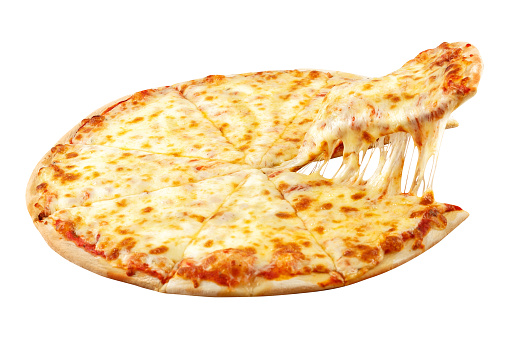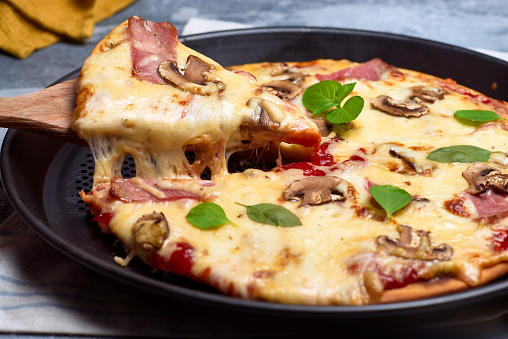Cheese pizza is a beloved classic that is enjoyed by people all around the world. It is a staple of pizza shops and restaurants, and is also a popular homemade meal. One of the most common questions people have about cheese pizza is how many calories it contains. In this article, we will take a detailed look at the calorie content of cheese pizza, including the types of cheese used, the size of the pizza, and the toppings that are added.
First, let’s take a look at the basic calorie content of cheese pizza. A standard slice of cheese pizza contains around 250-300 calories. This number can vary depending on the size of the slice and the toppings that are added. A larger slice of pizza will contain more calories, while a smaller slice will contain less. Additionally, toppings such as meats and vegetables can add additional calories to the pizza.
The type of cheese used in the pizza can also affect the calorie content. Mozzarella cheese, which is the most common type of cheese used in pizza, contains around 85 calories per ounce. Other types of cheese, such as feta and blue cheese, can contain more calories per ounce. For example, Feta cheese contains around 75 calories per ounce, and blue cheese contains around 100 calories per ounce.
One of the most important factors that determine the number of calories in a slice of cheese pizza is the size of the slice. A standard slice of cheese pizza from a large, 18-inch pizza typically contains around 300-350 calories. However, if you order a smaller slice, such as a personal-sized pizza, the calorie count may be closer to 200-250 calories per slice.
The type of cheese used on a cheese pizza also plays a role in determining the calorie count. Mozzarella cheese, which is the most commonly used cheese on pizza, contains around 100 calories per ounce. Other types of cheese, such as ricotta and feta, can have even higher calorie counts. If a pizza is loaded with cheese, it can contain even more calories per slice.
Toppings can also add to the calorie count of a slice of cheese pizza. Meat toppings, such as pepperoni, sausage, and bacon, can add around 50-70 calories per ounce. Vegetable toppings, such as mushrooms and peppers, generally have fewer calories.
The size of the pizza can also affect the calorie content. A small cheese pizza, which is typically around 8 inches in diameter, contains around 600-700 calories. A medium cheese pizza, which is typically around 12 inches in diameter, contains around 1200-1400 calories. A large cheese pizza, which is typically around 16 inches in diameter, contains around 1600-1800 calories.
Toppings can also add additional calories to the pizza. Common toppings such as pepperoni and sausage can add around 50-75 calories per topping. Vegetable toppings, such as mushrooms and bell peppers, can add around 25-50 calories per topping. Additionally, sauces such as marinara and alfredo can add additional calories to the pizza.
It’s important to note that the calorie content of cheese pizza can also vary depending on the recipe used and the method of cooking. For example, a pizza made with a thick crust will contain more calories than a pizza made with a thin crust. Additionally, a pizza that is cooked in a wood-fired oven will contain fewer calories than a pizza that is cooked in a conveyor belt oven.
In conclusion, cheese pizza is a delicious and popular meal that can vary in calorie content depending on the types of cheese used, the size of the pizza, and the toppings that are added. A standard slice of cheese pizza contains around 250-300 calories, while a small cheese pizza contains around 600-700 calories. A medium cheese pizza contains around 1200-1400 calories and a large cheese pizza contains around 1600-1800 calories. Keep in mind that the calorie content can also vary depending on the recipe used and the method of cooking. To control calorie intake, you can opt for a thin crust, opt for vegetable toppings, and limit the cheese and meat toppings.

 Home
Home Health
Health Diet & Nutrition
Diet & Nutrition Living Well
Living Well More
More












